Garden Designers' 9 Favorite Flower Pairings For a Gorgeous Landscape
Get inspired by these stunning, expert-picked floral combos.
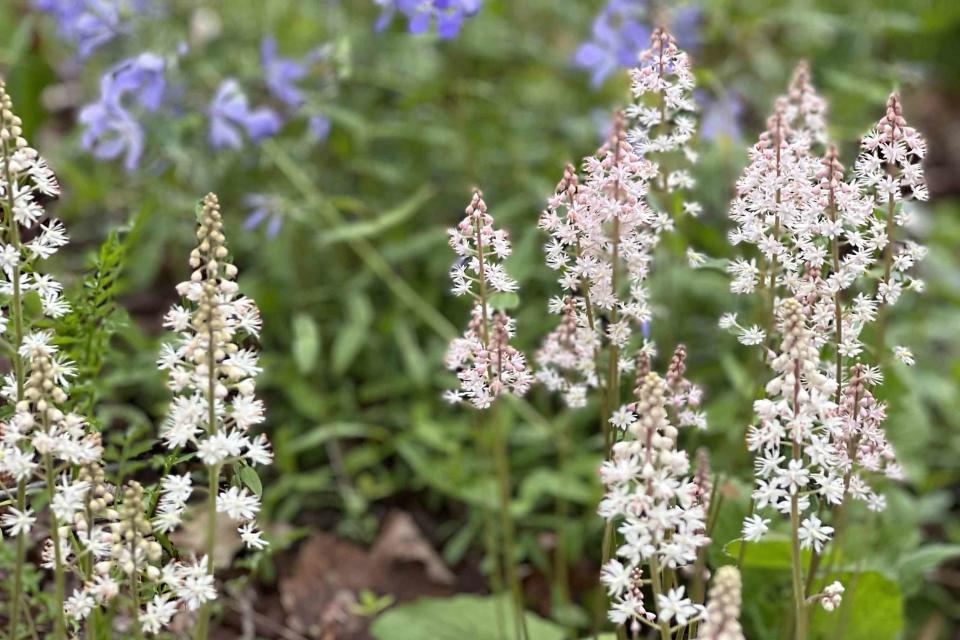
Christina Koether
Any gardener who's paralyzed by the overwhelming number of choices at a nursery knows how hard it can be to narrow down your plant palette. And if you succumb to taking home a little bit of everything that catches your fancy, you’ll find yourself with a hodgepodge of plants that don’t carry the visual impact of a more tightly-edited selection.
To make your plant shopping and garden planning easier, we spoke to five garden designers and asked them to share their favorite flower pairings. Here are their flower garden ideas for a wide variety of climates and situations.
Related: How to Create a Pollinator-Friendly Garden
Krinkled White Peony & Amsonia “Blue Ice”
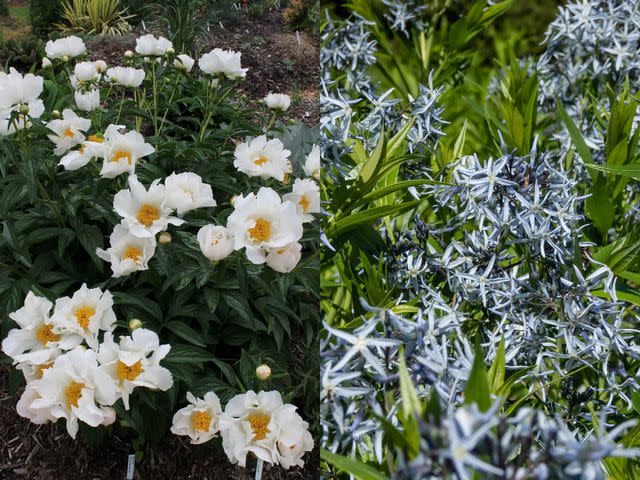
Plant Delights Nursery (left); Kristine Radkovska/Getty Images (right)
Christina Koether, the garden designer behind Nomadica in Weston, CT, spends more time thinking about flower pairings than most: In addition to her garden business, Koether operates a microflower farm.
Koether shared several picks, including this perennial pairing of a peony (Paeonia lactiflora krinkled white) and an amsonia (Amsonia tabernaemontana blue ice). “The sturdy stems of these long-lasting, white single-petal peonies hold their yellow centers above the shorter amsonia's blue star flowers,” she says.
“Even when they aren't blooming, the amsonia foliage is hard-working covering the legs of the peonies and turning a beautiful yellow in the fall.” These two bloom best in full sun, but both will tolerate part sun.
Purple Coneflower & Wild Quinine
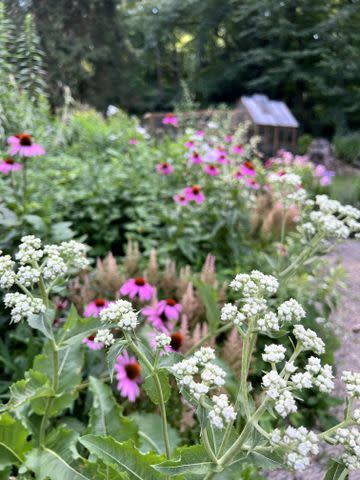
Christina Koether
Another pairing from Koether is the inspired combination of purple coneflower (Echinacea purpurea) and wild quinine (Parthenium integrifolium), both of which are native to the Northeast.
“This duo looks incredible together because of the unique flower form of the quinine against the shape of the echinacea,” says Koether. “Watch goldfinches land on the echinacea to eat the seeds, and enjoy blooms all summer long.” Plant in medium soil in full to part sun.
Related: The 2 Best Ways to Test Your Soil pH, According to a Garden Pro
“Running Tapestry” Foamflower & Wild Blue Phlox
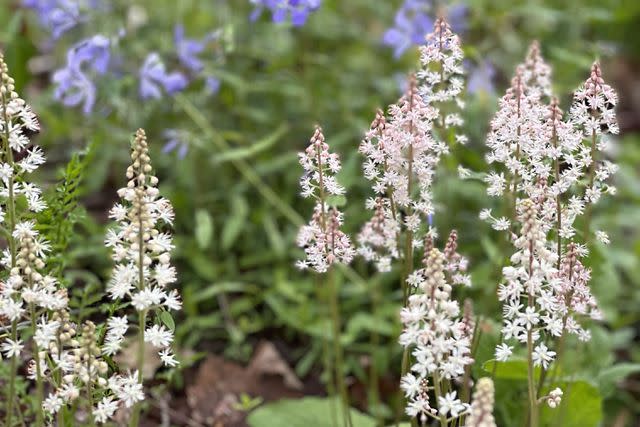
Christina Koether
If groundcover is what you need, Koether recommends these spreading, low-growing native plants: “Running tapestry” foamflower (Tiarella cordifolia running tapestry) and wild blue phlox (Phlox divaricata).
She says, “They seamlessly mix together for a tapestry of white spikes and bluish purple blooms loved by the first butterflies of the season.” Koether says to plant in shade to part the sun.
Millenium Allium & “Montrose White” Catmint
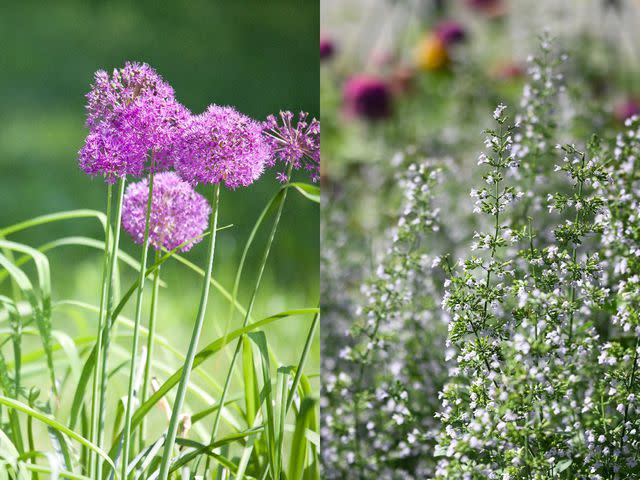
JaysonPhotography/Getty Images (left); kazue tanaka/Getty images (right)
Looking for deer resistance? Koether’s got ideas for that too: Millenium allium (Allium millenium) and a white variety of catmint (Calamintha nepeta montrose white).
“Incredibly reliable as deer resistance, this late summer combo blooms when the garden, and gardener, start to feel tired in the late summer,” she says. Plant in full sun, and Koether recommends weaving in Mexican feathergrass (Nassella tenuissima) as a complementary texture.
Great Masterwort & Bumbleberry Salvia
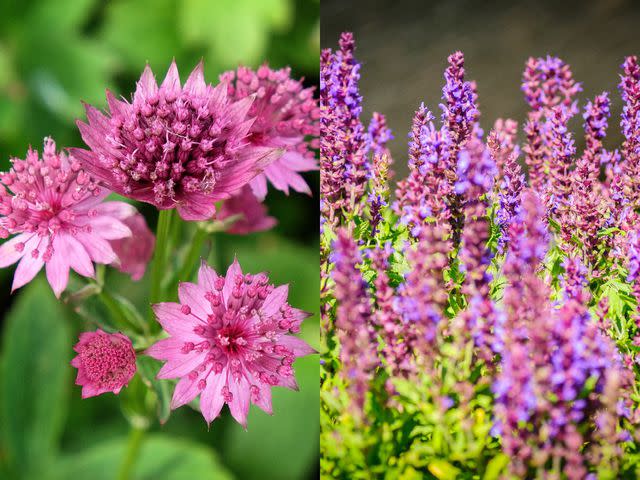
Alex Manders/Getty Images (left); Shanserika/Getty Images (right)
For a pair of long-blooming perennials that both make wonderful cut flowers, Koether suggests great masterwort (Astrantia masterwort roma) matched up with “bumbleberry” salvia (Salvia nemorosa bumbleberry).
“Plant the masterwort in front of the salvia to make its intricate flowers light up,” advises Koether. You’ll need part sun and medium soil when planted together.
Common Yarrow & Douglas Aster
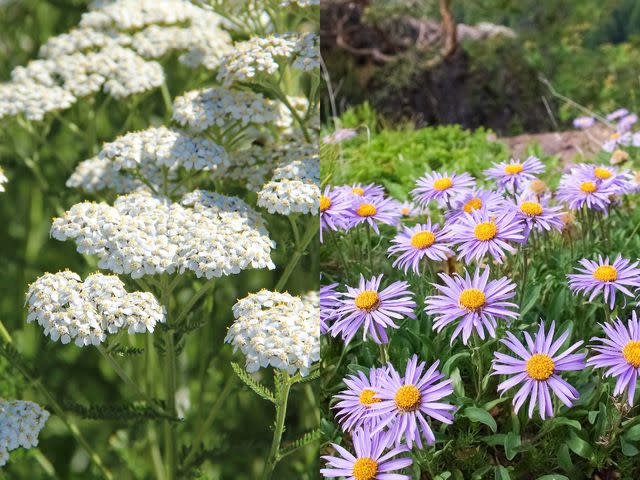
fotolinchen/Getty images (left); Mor65/Getty Images (right)
“I like this combo for late spring floral and seed head blooms in June in Seattle,” says landscape designer Naomi Goodman, the founder of Firecracker Design Studio.
Pair common yarrow (Achillea millefolium) and Douglas aster (Symphyotrichum subspicatum) with native and climate-adapted grasses such as Idaho fescue (Festuca idahoensis) and giant feather grass (Stipa gigantea).
Goodman says, “It mimics a stylized Western Washington prairie suitable to the rainy side of the Pacific Northwest or Northern California. This plant combo is low water and gives a floral and textural hit that is gorgeous and beneficial to wildlife. The blooms on all these plants are long-lasting, making people (and wildlife!) happy.”
Related: 40 Drought-Tolerant Plants That Will Improve Your Home's Curb Appeal
Eastern Red Columbine & Golden Alexander
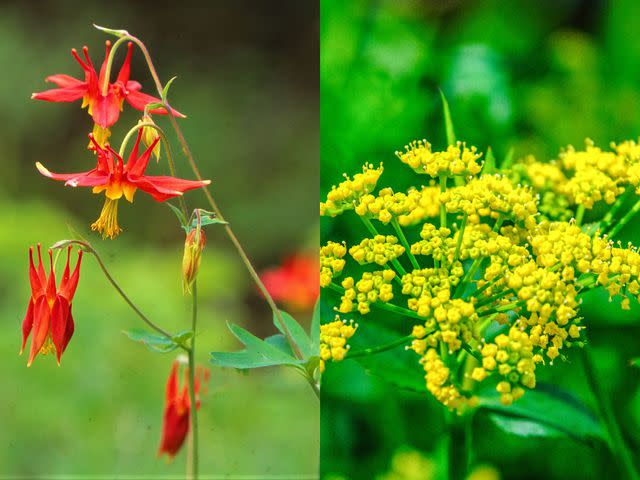
Richard Jackson/Getty Images (left); KenWiedemann/Getty Images (right)
Sarma Ozols, a senior gardener at the Trust for Governors Island in New York City, likes to pair Eastern red columbine (Aquilegia canadensis) with golden Alexander (Zizia aurea or aptera), two spring-flowering plants native to North America east of the Rockies. The red and yellow columbine will bloom first with the golden Alexander coming into bloom as it finishes.
"Dark Knight" Scabiosa & "Cherry Brandy" Blackeyed Susan
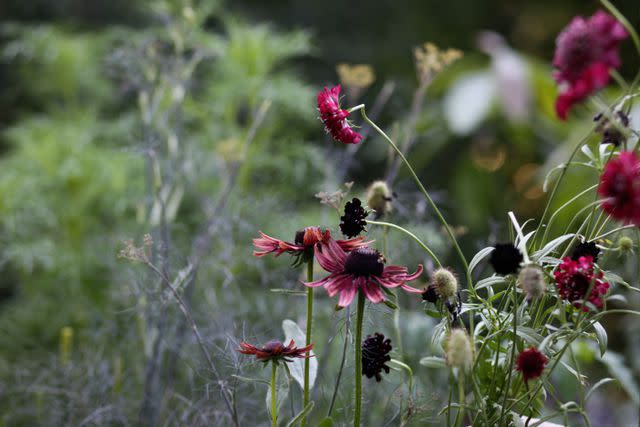
Marissa Angell
“I usually am a little wary of incorporating reds into a palette, but this combo feels just moody enough to make a statement but doesn't burn your retinas,” says landscape architect Marissa Angell, whose eponymous firm is based in New York’s Hudson Valley.
In her planting of the heirloom scabiosa "Dark Knight" and a red-petal black-eyed Susan (Rudbeckia 'Cherry Brandy'), Angell tempered the mood further with some bronze fennel. “The scabious seedheads are a nice bonus, too,” she adds.
Iceberg Roses & Purple Salvia
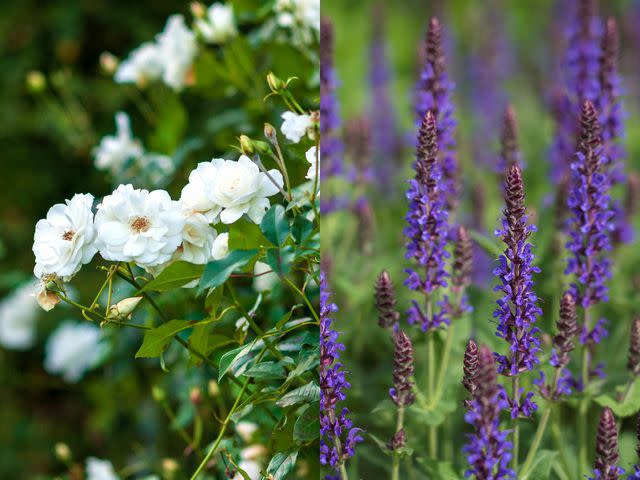
Nadya So/Getty Images (left); Marcia Straub/Getty Images (right)
“Iceberg roses are a great landscape staple, especially in warmer climates,” says Ward Dilmore, the founder of Petrus Landscaping in California’s Bay Area, of this varietal of Floribunda rose.
“Their consistent white blooms go well with several plants, but we often pair them with purple salvias, of which there are many varieties. White and purple is a great neutral color combination that goes with many landscapes.”
Related: 'Chaos Gardening' Is the Low-Maintenance Way to Grow Flowers All Season
For more Real Simple news, make sure to sign up for our newsletter!
Read the original article on Real Simple.

 Yahoo Lifestyle
Yahoo Lifestyle 
